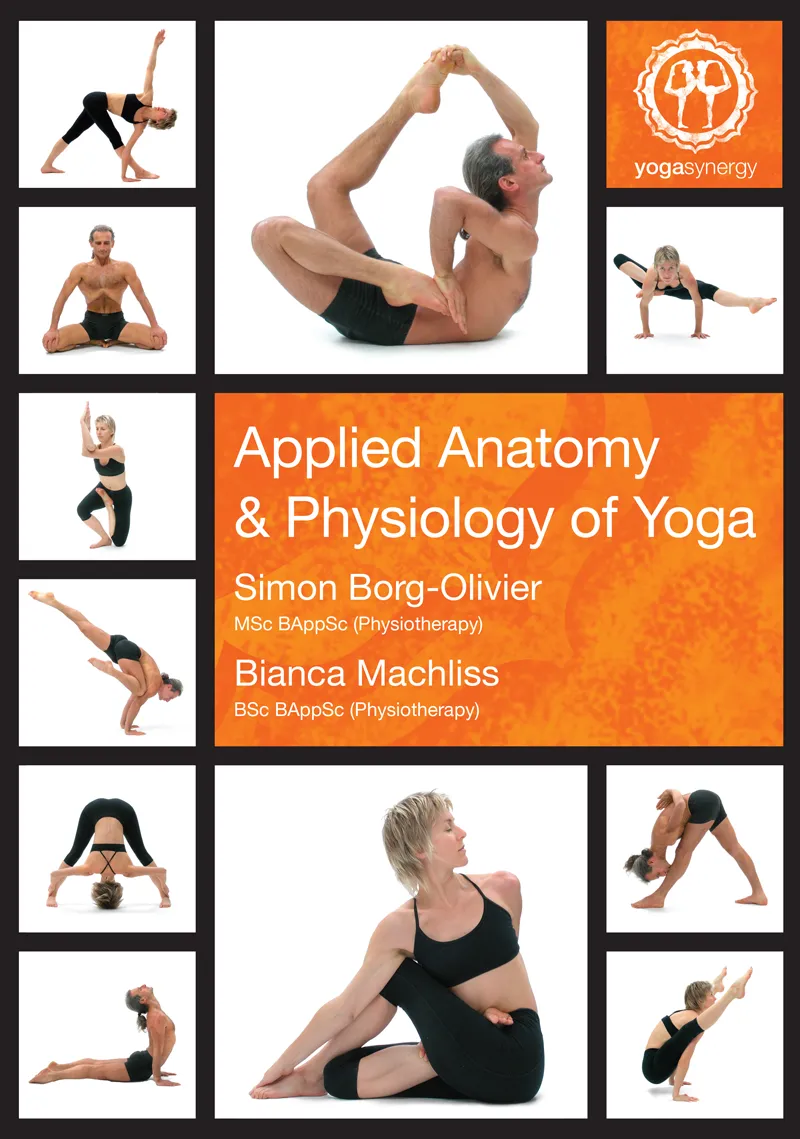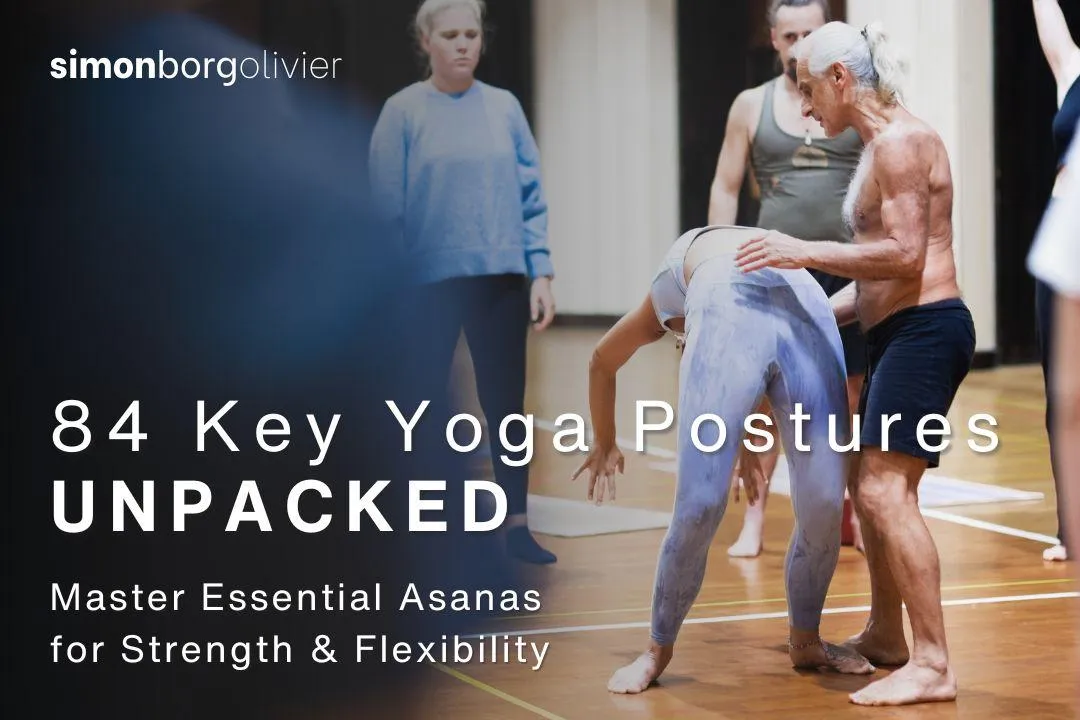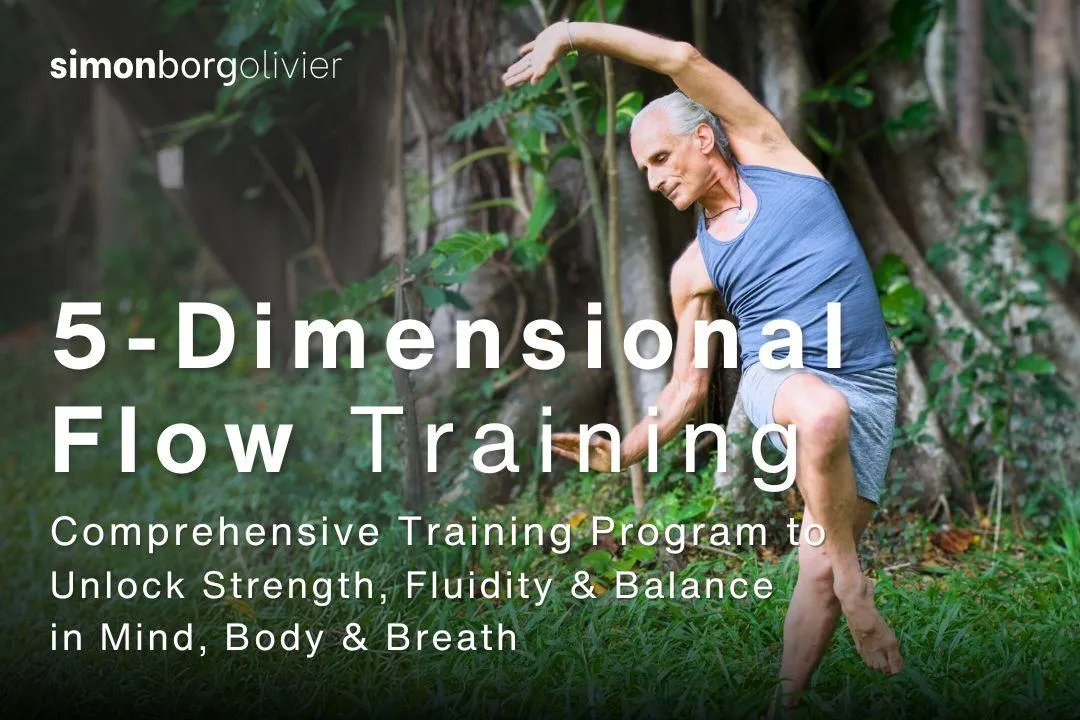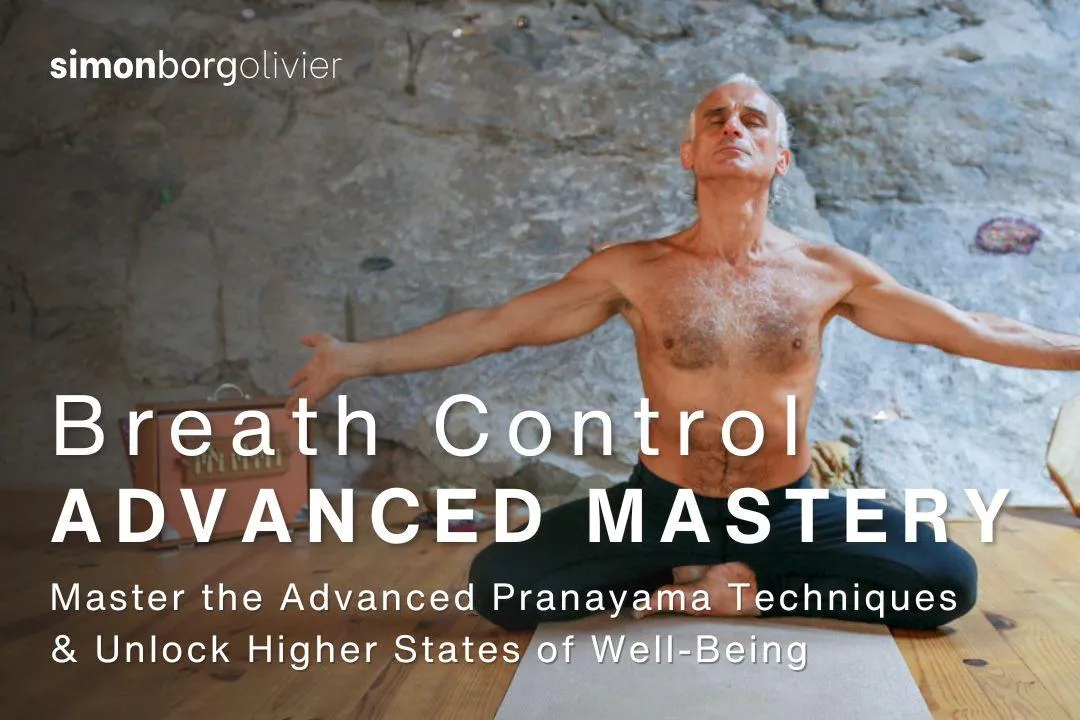Where Ancient Movement Meets Modern Science
Discover 5-Dimensional Synergy Flow
A system based on the common origin of yoga, qigong, tai chi, martial arts, and physiotherapy.
It restores the body’s natural way to move and breathe, energising without strain and calming without collapse.
Experience a calmer, stronger, more connected way to move and breathe.
7-Day Retreat in Simon's Private Dome
Simon is openning the doors of his home to a small circle of practitioners for a 7-day in-depth immersion in his private geodesic dome in Byron Bay Shire.
The Evolution of a Unified Practice
For more than four decades, Simon Borg-Olivier has explored how the world’s great movement traditions connect at their source. Alongside Bianca Machliss, he co-created the Yoga Synergy Method, combining traditional yoga with modern physiotherapy to adapt classical postures into safe, functional movements for modern bodies — building strength without strain and flexibility without force.
Drawing from this foundation, Simon’s continued research into yoga, qigong, tai chi, martial arts, and modern physiology revealed one common origin — a universal intelligence of movement where breath, energy, and awareness function as one.
5-Dimensional Synergy Flow distills these principles into a simple yet profound system for students, teachers, and advanced practitioners alike. Whether you’re refining your own practice or guiding others, it teaches you to move from your true centre — with strength, calm, and vitality that last a lifetime.
Tense less. Stretch less. Breathe less. Think less.
FEEL MORE
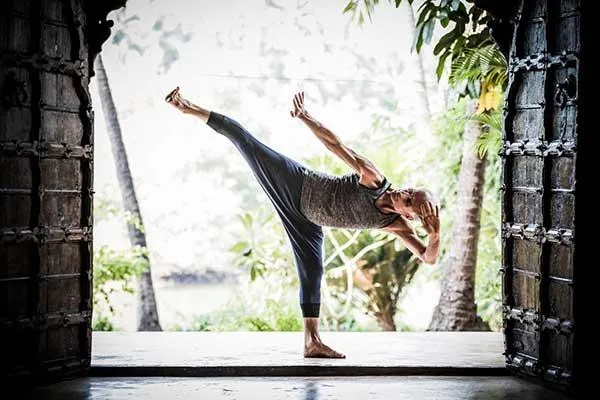
FREE E-BOOK with VIDEO PRACTICES: "How To Increase Strength, Flexibility, & Fitness While Nourishing Your Immune System and Increasing Your Energy Levels"
Transform Your Health in 5 Key Areas
Unlock a balanced, vibrant life with these interconnected benefits:
Body: Pain-free movement, strength, and flexibility.
Mind: Inner calm, focus, and mental clarity.
Energy: Natural vitality without stress or strain.
Connection: Enhance relationships through inner balance.
Lifestyle: Live with purpose, ease, and abundance.
What is 5-Dimensional Flow?
This unique practice combines movement, breath, and mindfulness to restore natural posture, energize your body, and connect deeply with your core—your physical, mental, and emotional center.
What are the 5 dimensions referring to?
(1) Lengthening and shortening
(2) Bending forward and backward
(3) Side-bending from left to right
(4) Twisting from left to right
(5) Expanding and contracting (like your trunk but not your spine can do)
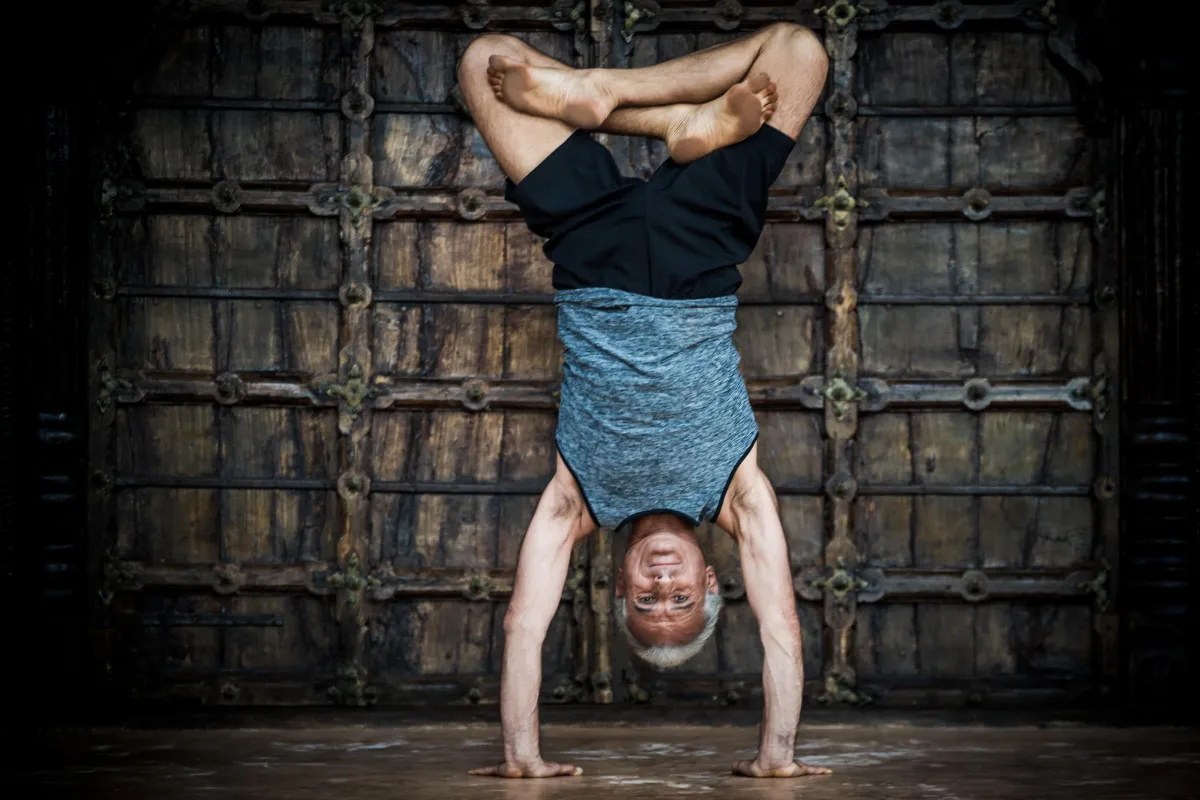
Join the Next In-Person Workshop
Deepen your practice with in-person workshops, retreats, and trainings.
AUSTRALIA
5-D Synergy Flow
7-day Intensive
(6 hours/day)

6th - 12th December, 2025
Byron Bay, Australia
AUSTRALIA
5-D Synergy Flow
Weekend Intensive
(6 hours/day)
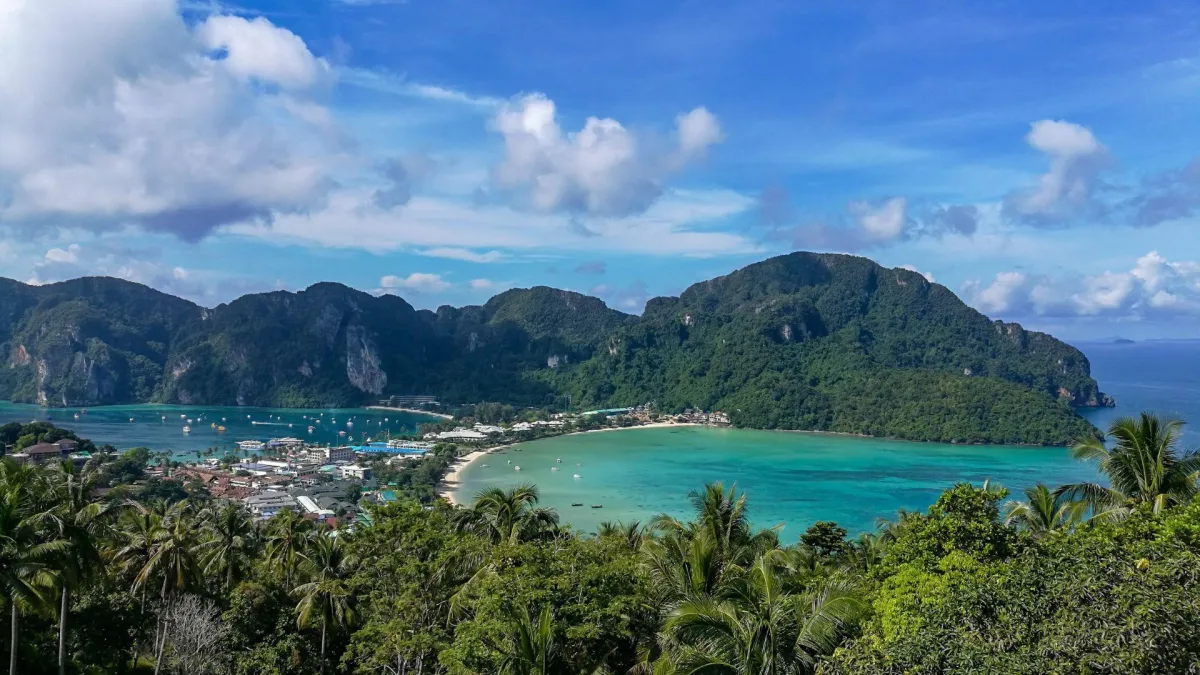
13th - 15th February, 2026
Brisbane, Australia
AUSTRALIA
5-D Synergy Flow
10-day Intensive
(6 hours/day)
20th - 29th March, 2026
Perth, Australia
REGISTRATIONS WILL OPEN SOON
Or Become a Yoga Teacher From Your Home
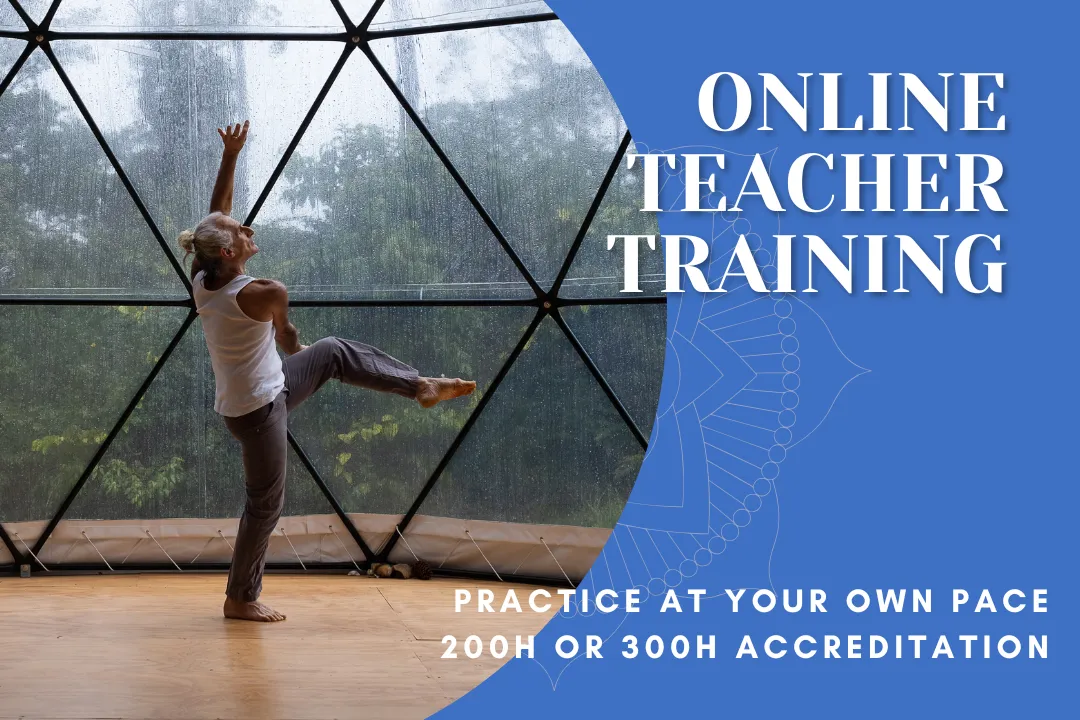
Join the 5 Dimensional Synergy Flow Teacher Training and transform your practice. Explore movement, mindfulness, energy, and community in this holistic program.
Learn at Your Own Pace
Comprehensive online courses blending traditional yoga with modern science for health, longevity, and happiness.
Health, Happiness & Longevity
Online Community Platform
Health, Happiness & Longevity (HHL) is Simon Borg-Olivier’s exclusive online platform, where all of his teachings come together in one place.
Whether you're seeking physical healing, energy, mental clarity, or deeper self-awareness, this space gives you the tools to support your body and mind—at your own pace, from anywhere.
What You Get With HHL
All Online Courses Streamed Here
Get access to every course directly through the platform—learn at your own pace.
New Guided Practices Added Regularly
Simon uploads new practice classes, breathing sessions, and movement tutorials each month.Free Masterclasses & Content
Create a free account to access sample practices and full-length masterclasses—no payment required.
Direct Access to Simon
Ask questions, share insights, and connect with Simon and the HHL community at anytime.Supportive Global Community
Practice alongside a like-minded group of students from around the world.
How It Works
Create a free account – instantly access free classes and resources
Choose your path – buy individual courses or join the HHL subscription
Unlock everything – the subscription gives you full access to all current and future courses
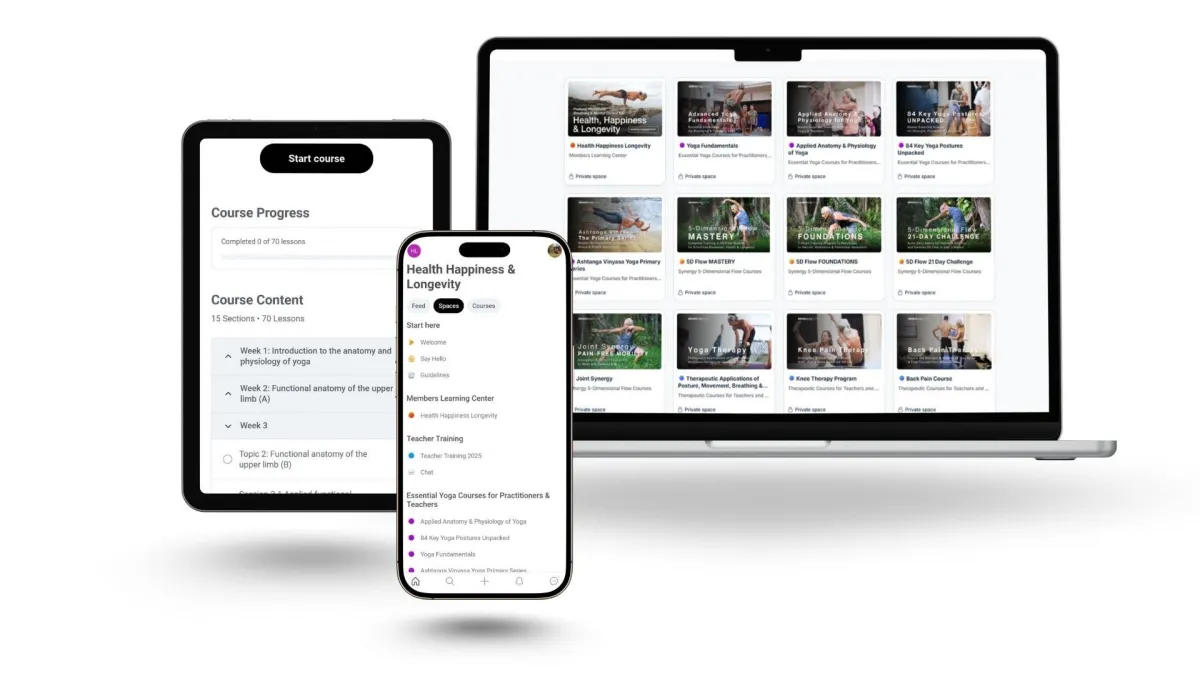
Works on any device. Cancel anytime.
Why “Health, Happiness & Longevity”?
We believe real change starts from within. When you feel strong, calm, and connected in your own body, you show up better in every part of life—as a parent, partner, friend, or teacher.
Health, Happiness & Longevity is more than a name—it’s a philosophy.
Our approach blends modern science with traditional wisdom. You'll find teachings on posture, movement, breath, mental control, diet, and lifestyle—all designed to help you thrive, not just survive.
When your body is functional, your mind is steady, and your energy flows freely, you become a source of strength and clarity for others.
Want to Join Right Now?
Free Account
$0.00
Start at no cost
Access to free masterclasses
Free practice content
Preview the HHL platform
Option to upgrade anytime
Monthly Subscription
$49.99 USD/month
Full access to all courses & programs
Guided classes with Simon
Live Q&As and community access
New content added monthly
Cancel anytime
Yearly Subscription
599.88 $490
USD/year
Save $109.88! That’s over 2 months free!
Bonus content (early access or exclusives, if available)
Pay once = no monthly billing.

14 days full money back guarantee.
What students and practitioners are saying about Simon
"Yoga taught with joy and a truly open heart."
"Simon brings deep and thorough knowledge across all yoga disciplines, enriched by decades of high-level practice. His incredible generosity toward students of all abilities is unmatched. No pretension or superficiality here—just yoga taught with pure joy and an open heart. My highest respect and gratitude."
- Stephane Redey

"Simon is one of the last true yoga masters."
"Simon is truly at the top of yoga teaching. I love every movement, every bit of energy, and the deep connection he creates. He is one of the last true masters, a precious gift to all of us. I am grateful every day for having had the opportunity to learn from him."
- Georgina Polyak & Lauren Fields

"The most authentic teacher I’ve ever encountered."
"Simon has a unique gift for teaching from his heart, mind, and soul. For years I searched everywhere - books, the internet, and magazines - to find someone who combines profound theoretical knowledge, intelligent practice, passion, and dedication. The moment I met Simon, I knew he was that teacher. His ability to continuously evolve and guide his students to higher, purer, and more intelligent levels of practice is extraordinary."
- Oksana Isavnina

"Simon is the missing link between traditional yoga and modern science."
"As a professional athlete and yoga practitioner for over 30 years, I struggled to find yoga practices that energized rather than depleted me. Meeting Simon was a turning point and I discovered the missing link between traditional yoga and modern physiotherapy. Simon’s unique approach, blending biology, physiotherapy, and yoga, profoundly changed my life. Health, relationships, even my professional performance improved dramatically. Training with Simon revealed what the sages meant by yoga as Kaivalya: true freedom in presence."
- Tite Togni

Book Applied Anatomy & Physiology of Yoga
Simon Borg-Olivier and Bianca Machliss's renowned textbook is now available in digital format. Dive deep into the functional anatomy, physiology, and biomechanics of yoga—written by practitioners, for practitioners.


Available as a PDF
A definitive resource for yoga teachers, therapists, and serious students
460+ pages of clear, practical, and science-backed insights on yoga, anatomy, and physiology
Trusted by professionals—prescribed text in the Master of Wellness program at RMIT University
Printed edition is currently out of stock—new print run coming soon.
Get the E-Book PDF for $47
Book Reviews...
Meet Simon Borg-Olivier
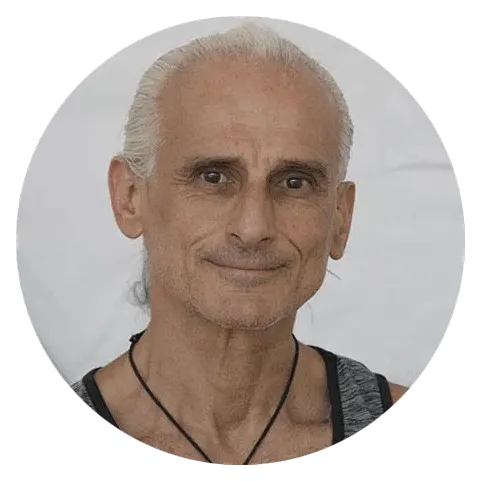
Simon Borg-Olivier is a physiotherapist, certified yoga therapist, and co-creator of YogaSynergy. With over 40 years of teaching experience, Simon has guided thousands worldwide to improve their health, movement, and breathing through a unique fusion of traditional wisdom and modern science.
He combines his background in physiotherapy, yoga, and biomechanics to create accessible practices that foster strength without tension, flexibility without pain, and energy without overexertion. Whether you're a seasoned teacher or a curious beginner, Simon’s methods can help you achieve balance, vitality, and longevity.
Simon on Podcasts
Listen to in-depth conversations where Simon Borg-Olivier shares his unique integration of traditional yoga wisdom with modern science. These podcasts feature discussions with leading voices in the movement and embodiment community, offering insights into safe, intelligent, and transformative practices. Whether you're a seasoned practitioner or new to yoga, these episodes provide valuable perspectives to deepen your understanding and practice.
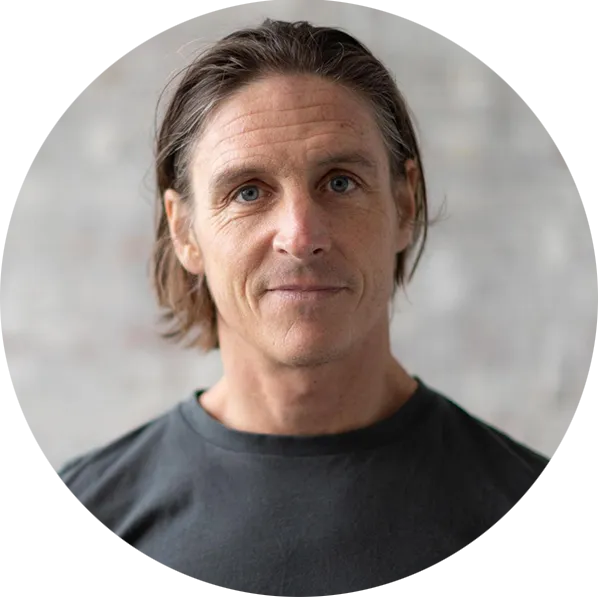
Adam Keen
Ashtanga Teacher
Keen On Yoga Podcast
“Simon is someone I could have back on my podcast every month.”
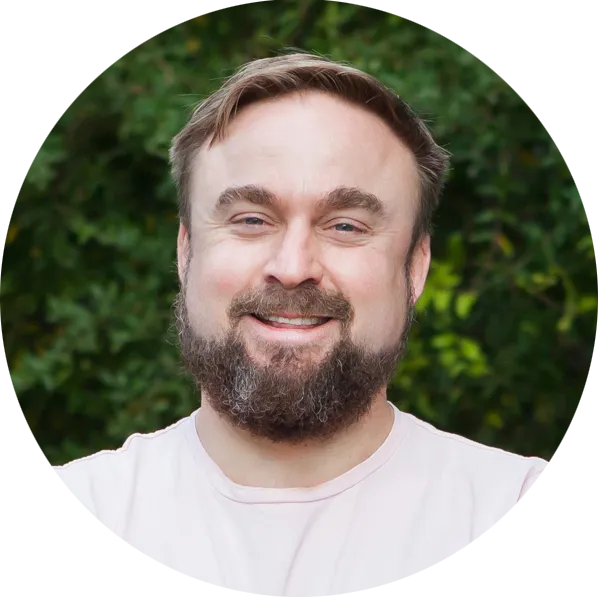
Mark Walsh
Embodiment Coach
The Embodiment Podcast
"There’s a soothing aesthetic quality to Simon's movement—that’s wisdom speaking.”

J. Brown
Yoga Teacher & Author
J. Brown Yoga Talks
"Simon's approach to yoga is both deeply rooted and refreshingly accessible."
Blog
Explore articles on yoga, therapy, breath and intelligent movement.

Moving the body to release the energy of the 7 main chakras
The main focus for the modern body – a body that lives mainly in chairs – should always be to move actively into poses without the help of external forces such as gravity, momentum, or the force of one part of the body on another part (e.g. using your hands to pull you into a posture). After moving actively into a pose, the main focus should be to lengthen and relax.
This set of simple instructions is part of a system I use, which you can apply during your posture, movement, breathing, and meditation practices. These instructions increase blood circulation, improve energy levels, and help regulate your nervous system for optimum help. I developed these instructions around the concept of moving with expansion then compression (related to breathing in and out) from your authentic core at the centre of your enteric nervous system (‘your gut brain’).
Your true core is inside your lower abdomen. It is known as the Dantien in China and the Kanda in India. Your core can project energy and information in 5 dimensions. It can itself move in the so-called 4-dimensional space-time, in which we usually choose to believe we live.
Your core is like your energy and intuition’s central railway station. The 7 main chakras of Indian yoga are like the main railway stations in any country. There are hundreds of little energy stations or centres in your body. The 7 main chakras are in the central column of your trunk. Each chakra (numbered below 1 at the base and 7 at the crown of your head) is associated with a main nerve plexus and a major endocrine system. Here are some simple instructions that you can use to enhance your posture, movement, breathing, and meditation practice.
Chakra 1: Muladhara (Base, Earth) Chakra
Push the sitting bones towards the feet (or at least in the direction of the thigh bones) (if the hips are flexed, then also try to turn the thighs outwards, and if the hips are extended, then try to turn the thighs inwards).
Push the sitting bones apart (when the hips are doing opposing movements such as one hip flexed, the other extended, or both hips abducted or adducted)
Simplest instruction for muladhara chakra for most postures is to push the sitting bones apart and relax the pelvic floor.
Relax the pelvic floor, especially around the urethra (but best for most people to relax the urethra, genitals and anus).
Chakra 2: Svadisthana (Reproductive, Hormonal, Water) Chakra
Move the tail bone away from the top of the hips in order to lengthen the spine. Always master lengthening the spine before learning later to shorten it (which is hard to do effectively and safely but is what most people do).
In forward bends, push the pubic bone forwards (to create spinal flexion) and upwards
In backends, push the tailbone backwards (to create spinal extension) and downwards
Relax the pelvic floor, especially around the genitals and anus (but best for most people to always relax the urethra, genitals and anus more in everyday life)
Chakra 3: Manipura (Energy, Digestive, Fire) Chakra
Lengthen the lower back and the lumbar spine especially moving around L5-S1 (lumbo-sacral junction)
Move L5 away from the top of the sacrum and the sides of the top of the hips (iliac crests)
Relax the muscles of abdominal exhalation so you are able to breathe into your abdomen with your diaphragm.
Generally, when you bend forward, move the navel and the ‘navel spine’ (L4-L5) forward and down (relative to the standing posture).
Generally, when you bend backward, move the navel and the ‘navel spine’ (L4-L5) forward and up (relative to the standing posture).
Generally, when you twist to the right, rotate the navel and the ‘navel spine’ (L4-L5) closer to the right hip.
Generally, when you bend to the right side, move the navel and the ‘navel spine’ (L4-L5) closer to the left hip but away from the sacrum.
Chakra 4: Anahata (Heart, Air) Chakra
Lengthen the neck and the cervical spine, especially moving around C7-T1 (cervico-thoracic junction).
Move the shoulders (left and right shoulder joint complexes) apart.
Generally, when you bend forward, move the head down and the neck backwards (relative to the standing posture).
Generally, when you bend backward, move the throat forward and the chin upwards (relative to the standing posture).
Generally, when you twist to the right, rotate the head to the right but lift the right ear up (relative to the standing posture).
Generally, when you side-bend to the right, move the neck to the left side and up in order to lengthen the left side of your neck with out shortening the left side (relative to the standing posture).
Relax the throat, tongue, jaw and lips (i.e. check your neck could move, your tongue is free, your jaw could move and your lips could move if asked to).
Chakra 5: Vishudhi (Communication or Ether) Chakra
Lengthen the neck and the cervical spine, especially moving around C7-T1 (cervico-thoracic junction).
Move the shoulders / shoulder blades (left and right shoulder joint complexes) as far apart from each other as comfortably possible (or move them both away from the C7-T1
Generally, when you bend forward, move the head downwards and the neck backwards (relative to the standing posture).
Generally, when you bend backward, move the throat forward and the chin upwards (relative to the standing posture).
Generally, when you twist to the right, rotate the head to the right but lift the right ear up (relative to the standing posture).
Generally, when you side-bend to the right, move the neck to the left side and up in order to lengthen the left side of your neck with out shortening the left side (relative to the standing posture).
Relax the throat, tongue, jaw and lips (i.e. check your neck could move, your tongue is free, your jaw could move, and your lips could move if asked to).
Chakra 6: Ajna (Third eye) Chakra
Relax the throat, tongue, jaw, lips, and especially relax the outer eyes (muscles that allow you to blink) and the inner eyes (muscles that move the eye balls).
Apply dristhi by gazing to the prescribed area with your eyeballs
Generally, gaze in the direction your core is trying to move
In other cases, allow the eyeballs to roll back in order to passively gaze at the third eye centre
Move the base of the back of the skull away from the rest of trunk when it is not touching anything
Press the base of the back of the skull into what ever it is touching (e.g. the floor)
Chakra 7: Sahasrara (Crown) Chakra
Lengthen the crown of your head away from the rest of your body
Press the crown of head into the floor in a headstand
Lengthen the tips of your fingers and toes if they are in the air, but keep them as relaxed as possible
Lengthen then grip with the tips of your fingers and toes if they are touching something (e.g. the floor)
Simple chakra-based instructions for physical, physiological, or mental health systems to apply during posture, movement, breathing, and meditation
These instructions are based on the concept of moving in an expansive way from your true core at the enteric nervous system, (‘your gut brain’), which can project energy an information in 5 dimensions, and can itself move in the so-called 4-dimensional space-time we’d like to believe we live in. These instructions are best as a simple summary of the above more complete form
(1) push your sitting bones apart and relax your pelvic floor
(2) push your pubic bone down and forward and push your tailbone down and back
(3) lengthen your lower back especially around L4 L5 and / or expand your abdomen
(4) lengthen and expand your upper back and expand and lift your chest.
(5) lengthen the back of your neck by moving your head slightly downwards and your neck slightly backwards and / or move your throat forwards and chin slightly upwards
(6) expand the space under the base of the back of your skull, relax your face and allow the eyes to softly gaze upwards
(7) project your energy from your core to connect with the tips of your fingers and toes are the crown of your head
General guidelines for working with chakras in posture movement and breathing:
Focus on adjusting the 12 main chakra points in the back then the front of the body that help to reestablish natural health with possibility of achieving yoga.
1. Muladhara: Move perineum down away from crown. Then control perineum (initially just relax then relax and/or controlled activation)
2. Svadisthana Rear: Move tailbone down away from crown; control anus (initially just relax then relax and/or controlled activation)
3. Manipura Rear: Encourage mobility, relaxation, space and stability around L5. Sacrum below L5-S1 is generally best to pull out and above L5 is generally best to pull in.
4. Anahata Rear: Encourage mobility, space and stability around upper back and the thoracic spine. Often this region is very stuck near T12-L1 and C7-T1 and has either hyper-kyphosis or hyper-lordosis and needs to be adjusted
5. Vishudi Rear: Encourage mobility, space and stability around cervical spine. Often this region is very stuck near C7-T1 and between C1 and the skull. Often the base of the neck is pushed out into a forward bend and the top of the neck is pushed inwards into a backwards bend. Often the best movement is to try to gently move the head downwards and the neck upwards.
6. Ajna Rear: Encourage relaxation and space to come to the bones and tissues at the back of the skull and especially to the junction between C1 and the skull. It is good to feel your breath come between C1 and the skull.
7. Sahasrara: Move the crown of the head away from the rest of the body. Encourage relaxation and space to come to the bones and tissues at the top of the skull.
8. Ajna Front: Encourage relaxation and space to come to the face and tissues at the front of the skull especially around the third eye centre. Relax and eventually control the jaw, tongue, lips, outer eyes and inner eyes.
9. Vishudi Front: Encourage length and relaxation in the front of the neck. Often this region is very stuck near C7-T1 and between C1 and the skull. Often the best movement is to try to gently move the base of the throat (corresponding to C7-T1) forwards and the chin upwards slightly.
10. Anahata Front: Encourage mobility, relaxation, space and stability around the front and sides of the chest. Usually the lower front ribs need to keep kept inwards while the centre of the chest needs to move upwards and outwards.
11. Manipura Front: Encourage mobility, relaxation, space and muscular strength (subject to being able to relax first) around the upper abdominal region
12. Svadisthana Front: Encourage mobility, relaxation, space and muscular strength (subject to being able to relax first) around the lower abdominal region
(1. Muladhara: Lower abdomen and perineum)

Main guidelines after considering and practicing all of this is:
Tense less…
Stretch less…
Breathe less …
Think less …
Eat less …
Do your best …
with a peaceful approach …
Be happy with the outcome …
Do it in a loving way …
What more people are saying about Simon...
Join Simon's Newsletter to Learn About Upcoming Events & Courses
LEARN
FREE RESOURCES
Information
LEGAL
Synergy Flow Collective Pty Ltd © 2025


